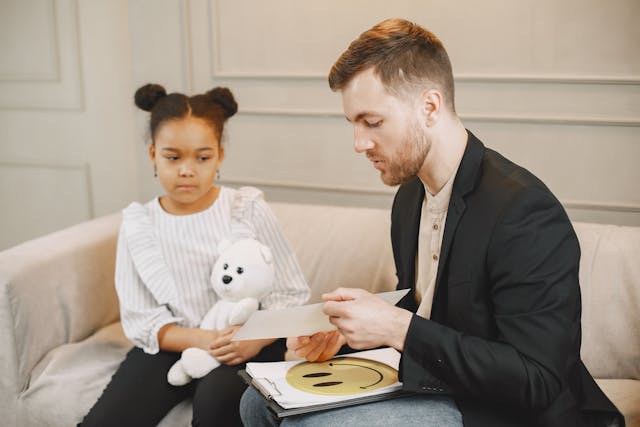The science of emotional regulation
Therapeutically treating child patients can be tricky, especially when it comes to emotional regulation, which can be more natural for younger children than adults. However, emotional regulation isn’t something we are born with — it’s something we learn. Parents play a crucial role in our emotion regulation by teaching their children how to regulate their emotions healthily from an early age, which is key to their development.
Emotional dysregulation can affect children's ability to manage their emotions, making it essential to teach kids to address it through coping strategies and professional support to build emotional resilience. Without emotional control, children may face anger management issues or other emotional challenges later in life.
In this guide, we’ll explore emotional and emotion regulation skills in more detail and provide ten practical and effective activities to help kids learn to regulate their feelings.
Overview of emotional regulation for kids
When children can regulate their emotions, they can handle complex and challenging situations and demonstrate resilience. Strong emotional regulation skills help reduce the likelihood of children becoming overwhelmed or upset, allowing them to remain calm and in control. While emotional awareness and regulation can be challenging for children due to limited vocabulary and difficulties expressing their needs, they are essential for their development. Incorporating emotion regulation activities is crucial in helping them develop these vital skills.
Parents often teach children self-regulation by using positive emotions and helping children learn to understand and name their emotions. However, children experiencing developmental issues or diagnosed with disorders like autism spectrum disorder may benefit from more structured emotional regulation treatment.
Importance of emotional regulation skills for kids
Self-regulation is critical to a child’s overall development, impacting social, physical, and emotional skills and psychological well-being. These skills enhance problem-solving abilities and communication, setting a solid foundation for future growth. Understanding and managing different emotions is crucial for developing emotional regulation skills.
Children who develop emotional regulation skills learn to have strong emotions, set boundaries, and build strong, healthy relationships. These skills also help manage stress and anxiety, reducing the likelihood of future mental health disorders. Teaching emotional regulation early on helps children navigate intense emotions, develop healthy coping strategies, and communicate their feelings in productive ways.
10 Effective Emotional Regulation Activities for Kids
Now, let’s explore ten activities that can help children develop their self-awareness, empathy, and emotional regulation skills:
1. Allow kids to take the lead
Encourage children to explore and identify different emotions rather than suppress them. Letting them take the lead in their big emotions and talking about their big feelings together helps them develop healthy ways to manage emotions. Your role is to facilitate this openness and avoid invalidating their emotional responses.
2. Feelings charades
This interactive game helps children recognize and express different emotions through non-verbal cues. It can enhance emotional literacy and empathy, key components of emotional regulation.
3. Learn to HALT
Teach children the HALT acronym (Hungry, Angry, Lonely, Tired) to improve their emotional intelligence and prevent emotional outbursts. They can better understand their feelings and communicate their needs by recognizing if their emotions are tied to physical sensations of hunger, anger, loneliness, or tiredness.
4. Positive self-talk practice
Helping children develop positive self-talk can boost their emotional resilience. This cognitive restructuring technique has been linked to improved self-esteem and emotional regulation in children.
5. Drawing emotions
Children often struggle to name their emotions, so providing them with art supplies and asking them to draw or collage their feelings can be a helpful and fun way for them to explore and identify different emotions. Once finished, ask them to explain their artwork to help them better identify and express their emotions.
6. Breathing and mindful exercises
Mindful breathing exercises are excellent tools for helping children calm down. Teaching kids deep breathing techniques and mindful body scans can help prevent their emotional reactions and outbursts and teach them how to de-escalate in stressful situations.
7. Yoga and physical exercises
While the camel pose is an excellent exercise for emotional balance and self-control, all forms of physical activity can help regulate emotions. Physical exercise reduces stress hormones and improves mood, energy levels, and general well-being, making it an effective tool for emotional regulation.
8. Sensory calm-down kit
Creating a personalized kit with sensory items (e.g., stress balls, fidget toys, scented objects) can provide children with tangible tools to self-regulate. Sensory interventions have been shown to support emotional regulation in children with various needs.
9. Teaching and practicing self-care
Self-care isn’t just for adults. Teaching kids to engage in self-care routines — like exercising, bathing, reading, or playing with a pet — can improve their mood and help them regulate their own emotions more.
10. Learning a new hobby
Encouraging children to explore new hobbies and important skills, like learning an instrument or trying a new sport, can help them manage and express different emotions. It gives them a constructive outlet for their different feelings and managing their emotions.
Conclusion
Teaching children emotional regulation skills is essential for their overall well-being and development. Emotion regulation activities for kids are crucial in this process, as they help children understand and manage their emotions effectively. While it can be challenging for younger kids due to their limited vocabulary, many engaging activities can assist in this learning. Whether through mindful exercises, creative outlets like drawing, or breathing techniques, these strategies can encourage children to develop healthy coping mechanisms.
It’s important to remember that every child has different needs when it comes to emotional self-regulation skills. Be patient and responsive to these individual differences. Ask questions, encourage children to express their feelings, and always approach them with empathy and open-mindedness. With practice, children can build resilience and develop emotional control and critical skills that will serve them throughout their lives.









.jpg)


.jpg)




.jpg)


.jpg)
.jpg)


.jpg)


.jpg)

